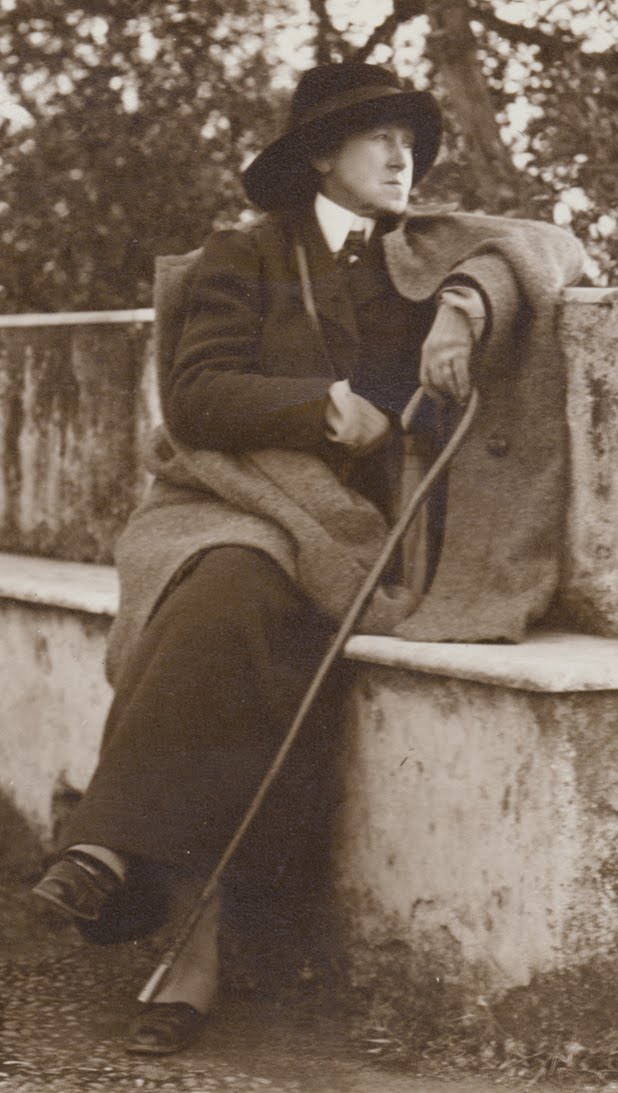Vernon Lee was more than just a nom de plume for  Violet Plaget, it was her identity. She may have adopted the name to establish a reputation as an aesthete or to sell more books, but among her closest friends, she became Vernon Lee, and to the poet Mary Robinson, one of the women who knew her best, she was simply “Vernie.”
Violet Plaget, it was her identity. She may have adopted the name to establish a reputation as an aesthete or to sell more books, but among her closest friends, she became Vernon Lee, and to the poet Mary Robinson, one of the women who knew her best, she was simply “Vernie.”
The details of Lee’s biography, particularly whom she may or may not have slept with, has garnered considerably more attention in recent years than what Lee wrote or believed, and among her scholars, there is a clear split into two camps. On one side, there are those who follow in the tradition of Irene Cooper Willis, Lee’s executor, who said, “Vernon was homosexual, but she never faced up to sexual facts. She was perfectly pure” (qtd in Newman 45). In a biography from a few years ago, Vineta Colby calls Lee a “sexually repressed lesbian” (xii). Colby takes considerably other liberties, not only in using Lee and Paget interchangeably, but also in frequently referring to her subject as Violet. On a first-name basis, Colby must be the last word on Lee’s sexuality.
On the other side of the aisle is Martha Vicinus, who has done a lot of interesting work on relationships, romantic and otherwise, between women, Christa Zorn, whose biography approaches Lee by “redefining classical forms of male homoeroticism;” and Sally Newman, whose article “The Archival Traces of Desire: Vernon Lee’s Failed Sexuality and the Interpretation of Letters in Lesbian History” argues, essentially, that archival collections cannot prove or disprove relationships that were often kept secret, encoded, or otherwise censored.

Vernon Lee, taken by Mary Robinson
In other words, there is a lot of debate, and it arises because Lee never came out, as we understand that construction today. She never explicitly stated that she was a lesbian, though she was known to have romantic relationships with several women over the course of her life. In histories of sexuality, she is often recorded as a follower of Pater or as a friend of Oscar Wilde and John Singer Sargent, not as a lesbian in her own right.
There is something about being a woman–about being a lesbian–that is far more difficult to verify, or to acknowledge–not by the women themselves, for, as Sally Newman shows, we cannot know for sure–but for society. There’s something about being a lesbian writer that becomes improbable, erasable, or pathological.
I’m not saying this is simply the plight of the female homosexual: historians often speculate that Ruskin was a latent homosexual. But since that doesn’t explain his predilection for young girls, homosexuality becomes easily bundled in with pedophilia, as it often does in current political discourse, and tied together with a bow of mental illness.
A similar phenomenon surrounds Virginia Woolf, who is sometimes seen as a lesbian because cultural gossip is so eager to label her as such, but it would be more accurate, though perhaps anachronistic, to label her, if a label must be assigned at all, as bisexual. But, again, the narrative becomes progressively dire: had sex with women —–> recurrent bouts with mental illness ——> eventual suicide. Ah, now it all makes sense.
In 1895, Max Nordau published Degeneration, which classified homosexuality in terms of both mental and a physical decay: “The pelvis retains a feminine form; certain other organs cease to develop, and the entire being presents a strange and repulsive mixture of incompleteness and decay” (538). This book, along with later works by Freud, et al helped to defined homosexuality as a mental illness. Lee was one of the first to counter Nordeau’s claims, which were open attacks on Sargent and Wilde. Nordau doesn’t really discuss female homosexuality, perhaps because it was believed that lesbians either did not exist, or they, like Lee, were simply invisible.
But that did not keep Lee’s critics, or even modern scholars, from performing a similar pathology of Lee. She also suffered bouts of depression, which only added to her already eccentric persona, most empirically exemplified by her masculine bearing and dress. Even worse, she was that most dreaded of labels–a spinster. And because she remained private about her sexuality, there is no way to say how she identified or how what labels she might accept today–lesbian? butch? transgender? It’s all speculation, but it is no less speculative than to call Lee a “failed lesbian.” To label Lee as repressed simply because she didn’t openly proclaim her attraction to women is akin to associating female homosexuality with mental illness, but these often seem to be the only choices available, even to modern scholars, when there is too much evidence to simply sweep Lee under the rug of compulsory heterosexuality.